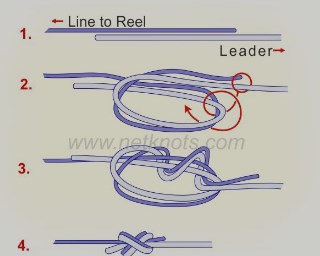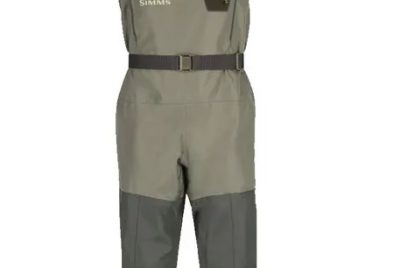Bass Fishing with Flies
Introduction
As an avid angler, I’ve always been drawn to the artistry and challenge of fly fishing. When it comes to bass fishing, employing flies adds an extra layer of excitement and skill to the pursuit. Let’s delve into the world of bass fishing with flies, exploring its benefits, techniques, and essential tips for success.
Benefits of Bass Fishing with Flies

Fly fishing for bass offers a myriad of benefits that traditional methods may not provide. Firstly, it elevates the challenge, requiring anglers to hone their skills in casting and presentation. Secondly, the natural presentation of flies mimics the behavior of aquatic insects, often enticing even the most cautious bass. Additionally, fly fishing allows anglers to precisely target specific areas where bass are known to congregate, increasing the chances of a successful catch.
Choosing the Right Fly for Bass Fishing
Selecting the appropriate fly is crucial for success in bass fly fishing. Understanding the local hatch and bass feeding patterns is essential. By matching the size and color of your fly to the prevalent insects, you can significantly improve your chances of enticing a strike. Popular fly patterns for bass include woolly buggers, clouser minnows, and poppers, each designed to mimic different prey species.
Essential Gear for Bass Fly Fishing
To embark on a successful bass fly fishing excursion, you’ll need the right gear. A sturdy fly rod paired with a reliable reel is essential. Opt for a rod with enough backbone to handle the fight of a bass yet sensitive enough to feel subtle strikes. Leaders and tippets of appropriate strength are also crucial for presenting flies effectively to bass.
Techniques for Bass Fly Fishing

Mastering the art of casting is fundamental to bass fly fishing. Practice precision casting to target specific areas where bass are likely to lurk, such as submerged structure or overhanging vegetation. Experiment with retrieval techniques, including stripping, pausing, and twitching, to imitate the movement of prey and trigger a response from bass.
Best Times and Locations for Bass Fly Fishing
Understanding the seasonal behavior of bass is key to planning a successful fly fishing trip. In spring, bass are often found in shallow waters, preparing for spawning. During summer, they seek cooler, deeper areas with ample cover. Fall brings opportunities for aggressive feeding as bass fatten up for winter. Research local regulations and restrictions before selecting a fishing location to ensure compliance and respect for the environment.
Tips for Success in Bass Fly Fishing
Patience and persistence are virtues in bass fly fishing. Don’t be discouraged by slow days or missed strikes. Instead, use each outing as an opportunity to observe and learn from the behavior of bass and their habitat. Be willing to adapt your tactics based on changing conditions, and remember that even experienced anglers encounter challenges.
Conservation and Ethics in Bass Fly Fishing

As responsible anglers, it’s essential to prioritize conservation and ethical angling practices. Practice catch and release whenever possible to preserve bass populations for future generations. Respect the environment by minimizing your impact on aquatic ecosystems, and always adhere to local fishing regulations and guidelines.
Safety Considerations for Bass Fly Fishing
Safety should always be a top priority when engaging in outdoor activities. Handle fly fishing gear with care to avoid accidents, and be mindful of your surroundings, especially when wading in unfamiliar waters. Carry essential safety equipment, such as a first aid kit and communication devices, and familiarize yourself with emergency procedures before heading out.
Common Challenges and How to Overcome Them
Bass fly fishing presents its fair share of challenges, from unpredictable weather to finicky fish behavior. When faced with adverse conditions, adaptability is key. Experiment with different fly patterns and techniques to find what works best in the given situation. Remember that persistence and a positive attitude can turn a challenging day on the water into a rewarding experience.
Conclusion

Bass fishing with flies is a rewarding pursuit that offers anglers a unique blend of challenge and excitement. By mastering the art of fly casting and presentation, understanding bass behavior, and practicing conservation ethics, you can enjoy a fulfilling experience on the water. So grab your fly rod, tie on your favorite fly, and immerse yourself in the timeless tradition of bass fly fishing.
FAQs
1. What are the best fly patterns for bass?
The best fly patterns for bass vary depending on location and prevailing conditions. Popular choices include woolly buggers, clouser minnows, and frog imitations.
2. How do I choose the right fly rod for bass fly fishing?
When selecting a fly rod for bass fly fishing, consider factors such as rod length, weight, and action. Opt for a rod that matches the size of the flies you’ll be using and the size of the bass you’ll be targeting.
3. Can I use traditional bass fishing techniques with flies?
While traditional bass fishing techniques such as topwater lures and plastic worms are effective, fly fishing offers a more delicate presentation and can be equally successful in enticing strikes from bass.
4. What are some beginner-friendly bass fly fishing locations?
Beginner-friendly bass fly fishing locations often include ponds, lakes, and slow-moving rivers with abundant bass populations and accessible shorelines.
5, How do I improve my casting accuracy for bass fly fishing?
Practice is key to improving casting accuracy in bass fly fishing. Start with short casts and gradually increase distance as your skills improve. Focus on proper technique and rhythm to achieve greater precision in your casting.




